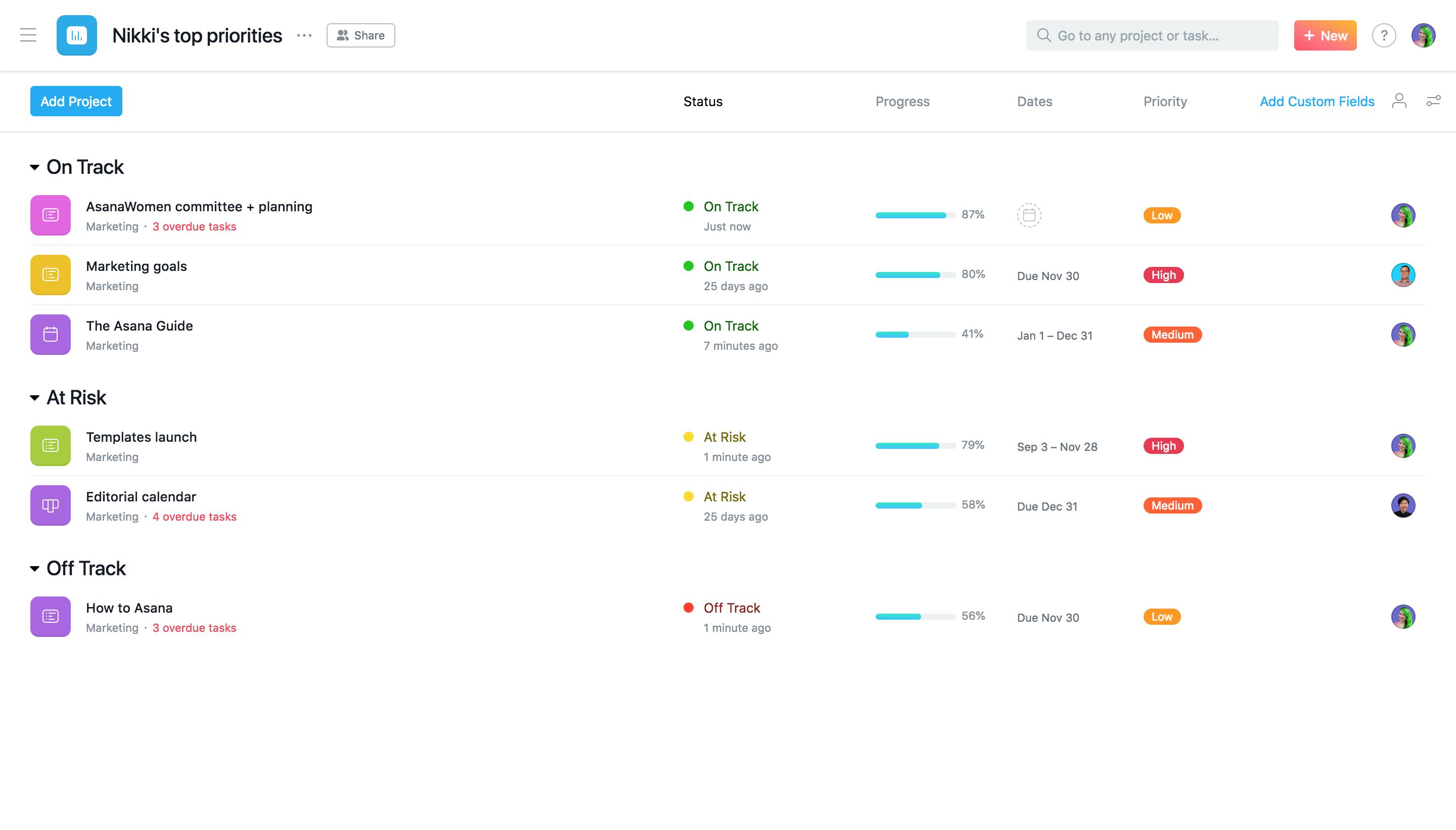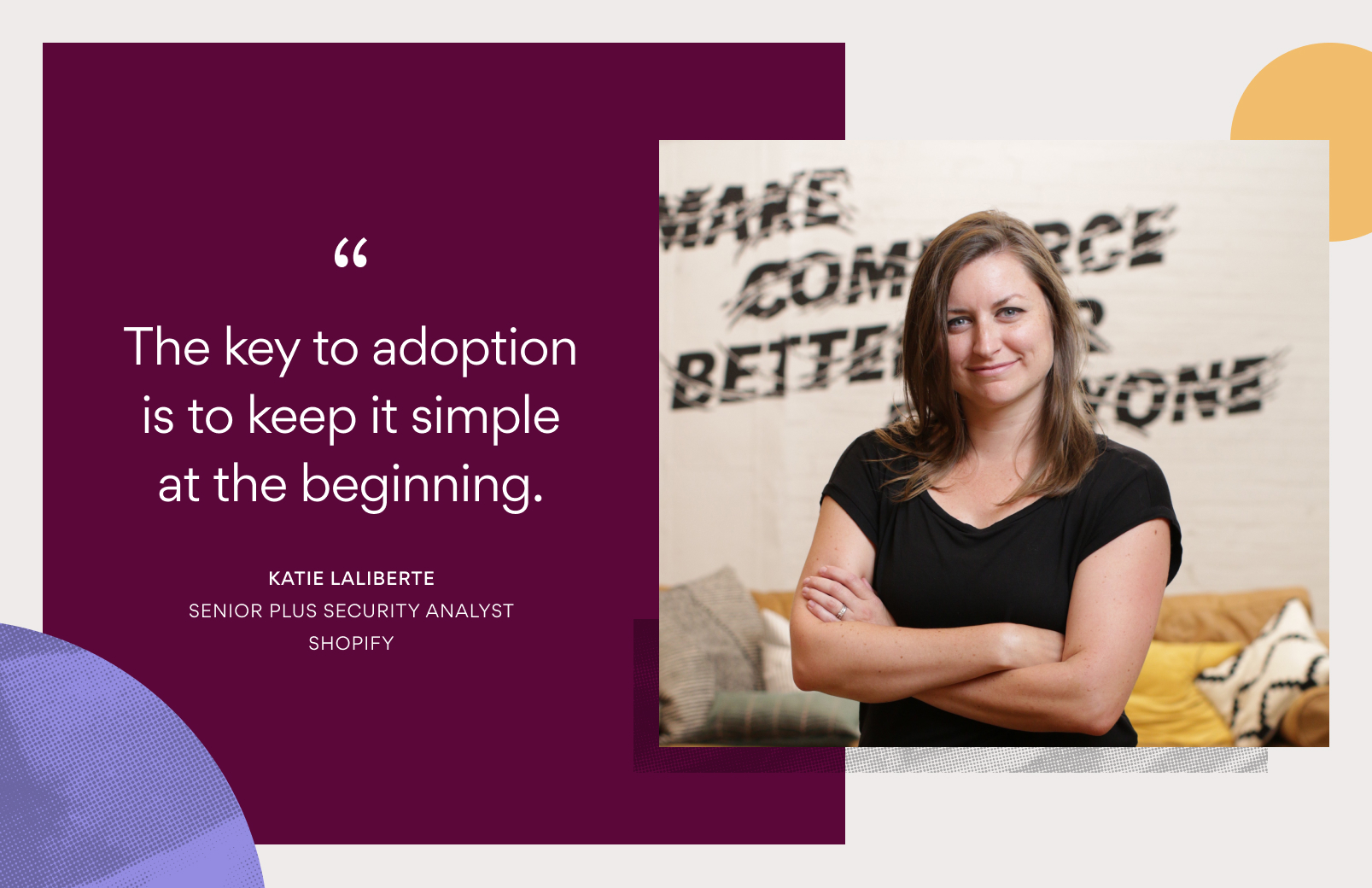3 ways to monitor project statuses with Portfolios

When a leader asks “what’s the project status?” it can lead to anxiety and wasted time. Program leads and teammates might not have one place to get the real answer. And even when they do finally collect all of the project statuses, the information is quickly outdated.
That’s why we created Portfolios—so everyone can see how multiple projects are progressing in real time from one view. This way, you can focus your time and energy on program work instead of information gathering. By spotting issues early, you can shift gears if new priorities arise or get off track.
Building on the example from our previous blog, we’ll show you how Portfolios can be used by department heads and execs, a program lead, and an individual managing multiple projects to monitor progress and drill into details that make the most sense for them.
Department heads and execs: monitor the health of top initiatives
Many directors, VPs, and senior leaders have limited visibility into project statuses, which makes it hard for them to know how their team is tracking towards their objectives or OKRs and report on progress to other executives. Sharing too much information or the wrong information can mean they start to micromanage or get caught up in details they don’t need to focus on.
The solution? Create portfolios for top initiatives and share them with leaders. Portfolios give them the critical project information they need (priority, status, who’s leading the project, what work is left, etc.) without overwhelming them with too many details they don’t. If a project needs an update, they can click “Request Status Update” right from the portfolio instead of calling a meeting or sending an email that leaves the team scrambling.

Last year, we created a Marketing Playbook project where each major priority was listed as a task. It was a really long list, and the work was happening in other projects. Our head of marketing couldn’t see project statuses and how we were tracking towards goals, nor did he have time to click into every individual task and subsequent project.
Now we have a portfolio for each of our five key marketing initiatives, featuring only the top projects towards achieving them. Our head of marketing can get a high-level overview of progress without getting overwhelmed and ask specific questions instead of pinging each task to ask, “where are we at on this?”
Program leads: drill into the details and shift resources
Though executives can use Portfolios to get better and more consistent project status updates, program leads are still responsible for monitoring progress, staffing decisions, and responding to needs that come up. If they’re working off of old data, or have too much to focus on, it’s difficult to spot problems until it’s too late. Not to mention the time they might waste trying to search across all the projects their team is working on.
“With Asana, I can easily see the big picture and manage all the moving parts, deadlines, and deliverables for the Mashies.” — Jennifer Diamond, Director of Creative Services, Mashable
In addition to using the portfolios their director uses, they can also create their own portfolios by team goal, program, or project owner. This is how you can proactively keep a pulse on priorities, instead of reacting when it’s too late.

On our team, each of the five Marketing Playbook Portfolios is owned by a different team lead so they can focus their attention. They can pull them up in team meetings or 1:1’s to guide discussion and shift resources on the spot (by reassigning tasks or due dates.) This also keeps major priorities top of mind as they think of staffing and resourcing for upcoming work.
Teammates: keep track of multiple projects
For individuals on a team, it can be hard to understand how their work contributes to the bigger picture and keep those goals in mind over time, which can impact motivation and productivity.
“Portfolios tool gives us a simple high-level overview of projects that are in-flight—for direct reports as well as for leadership.” — Andi Hinojosa, Account Director, Publicis
Portfolios help individuals keep track of projects they’re managing and directly contributing to, and make status updates easier for them to provide based on accessible project details. Ultimately that makes it easier to share these achievements with their manager.

As a content marketer, I personally use Portfolios to keep track of projects I manage and majorly contribute to. That way, I can remember to provide regular updates, instead of waiting for my manager to ping me or letting them go unnoticed. I can focus on the task-level details that I care about, while understanding how I’m helping the marketing team overall.
Monitor and drill in no matter your role with Portfolios
No matter your role, understanding how important projects are progressing and honing in on the key details that matter helps you stay productive, connected, and more confident about hitting goals—especially when you can find them in one place with Portfolios.
You can monitor and drill in to work with Portfolios if you have an Asana Business or Enterprise plan (click Portfolios from the sidebar). Premium and free customers can upgrade to Business or chat with our sales team to learn more.
Now that you’ve built out the perfect fleet of portfolios, you’re ready to share them with others across the team and organization so work isn’t siloed.

